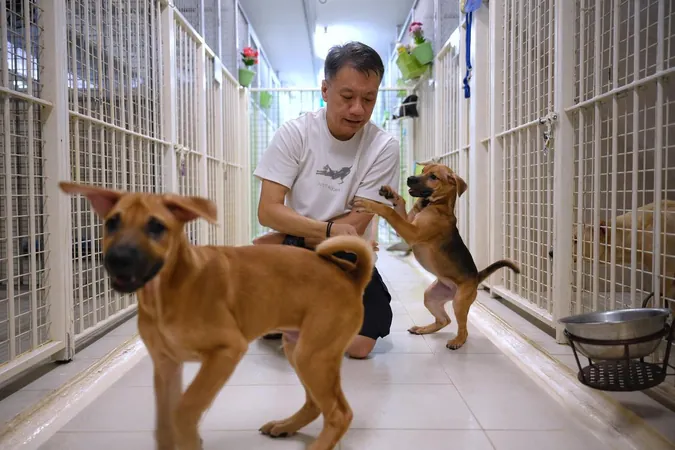
Navigating Uncertainty: How Animal Shelters in Singapore Set Their Own Welfare Standards
2025-07-20
Author: John Tan
A Closer Look at Singapore's Animal Shelters
In the heart of Singapore, Action for Singapore Dogs (ASD) stands out as one of the largest animal shelters at The Animal Lodge, housing around 90 dogs across compact units. President Ricky Yeo emphasizes their commitment to ensuring a balanced environment, stating, "We limit the number of dogs to prevent overcrowding." This careful management fosters social interaction among the dogs and has led to the creation of community spaces.
The Landscape of Animal Welfare in Singapore
With about 15 welfare organizations operating shelters in the country, only 12 of them are based at The Animal Lodge. These nonprofit shelters rely heavily on public donations and their own resources to sustain their missions.
Despite the efforts of the Animal and Veterinary Service (AVS) to establish some enclosure standards, there remains a lack of unified guidelines regarding overall animal welfare in Singapore's shelters. While the AVS is currently reviewing public feedback for potential new guidelines, shelters are largely left to self-regulate.
Striving for Best Practices
To maintain high welfare standards, shelters like ASD draw inspiration from established guidelines set by the Royal Society for the Prevention of Cruelty to Animals in the UK. ASD has implemented changes such as movable fences and larger spaces for nursing dogs, showcasing their dedication to the physical and emotional well-being of their animals.
Similarly, Causes for Animals Singapore (CAS) has designed its facility to minimize stress for the dogs, placing walkways along the sides of cages to prevent startling the animals as volunteers pass by. Currently, CAS houses around 30 dogs, a strategic choice given the challenges of their smaller facility and declining adoption rates.
The Adoption Crisis
Animal shelters across Singapore are confronting a stark reality: a significant drop in pet adoptions, with some reporting as much as a 50% decline in recent years. Factors contributing to this trend include the rising cost of living and a shift back to office work post-pandemic. CAS, for instance, has pivoted its focus to senior dogs needing palliative care, advocating for them to age with dignity.
Ensuring Animal Health and Welfare
Each shelter emphasizes the importance of ensuring that animals surrendered to them are healthy, yet they often find themselves doing initial health assessments. Save Our Street Dogs (SOSD) warns that sick animals can rapidly endanger the health of their residents. Limited space in the shelters also means that maintaining animal health is a top priority.
The Path Forward
Funding for these shelters frequently goes toward veterinary care, with ASD spending upwards of $482,000 anticipated for 2024. The AVS claims to engage with shelters regularly to support their efforts, stating that all shelters must uphold the health and welfare of their animals.
While no cap exists on the number of animals housed, AVS is open to feedback and ready to address any welfare concerns through investigation. Their proposed guidelines aim to enhance animal welfare and are part of a broader initiative to improve standards across the pet care industry.
Moving forward, shelter leaders hope the AVS will integrate their experiences and insights into any new guidelines, underscoring the importance of practicality and empathy in creating effective animal welfare standards.



 Brasil (PT)
Brasil (PT)
 Canada (EN)
Canada (EN)
 Chile (ES)
Chile (ES)
 Česko (CS)
Česko (CS)
 대한민국 (KO)
대한민국 (KO)
 España (ES)
España (ES)
 France (FR)
France (FR)
 Hong Kong (EN)
Hong Kong (EN)
 Italia (IT)
Italia (IT)
 日本 (JA)
日本 (JA)
 Magyarország (HU)
Magyarország (HU)
 Norge (NO)
Norge (NO)
 Polska (PL)
Polska (PL)
 Schweiz (DE)
Schweiz (DE)
 Singapore (EN)
Singapore (EN)
 Sverige (SV)
Sverige (SV)
 Suomi (FI)
Suomi (FI)
 Türkiye (TR)
Türkiye (TR)
 الإمارات العربية المتحدة (AR)
الإمارات العربية المتحدة (AR)